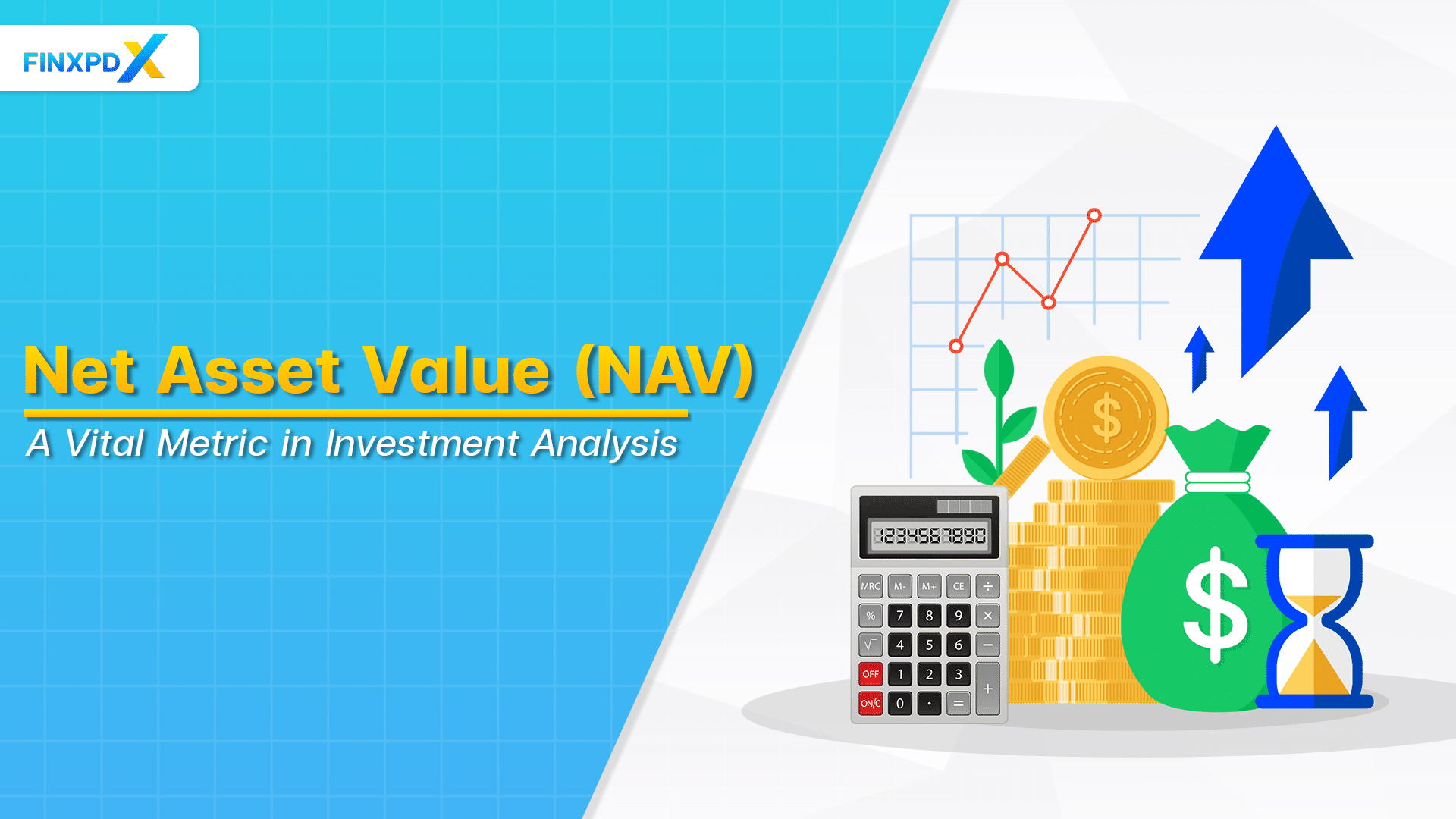Investing can often feel like navigating through a maze of financial jargon. One term that frequently pops up and is important is “NAV,” or Net Asset Value. Understanding what NAV is and its relevance, especially in the context of mutual funds, can make a difference in your investment strategy.
In this comprehensive guide, we will unravel the layers of NAV, from its basic definition to its critical role in mutual fund investing.
What Is NAV?
When diving into the world of investing, you’ll often encounter the term “NAV.” NAV, standing for net asset value, is essentially the worth of one share in a mutual fund or an exchange-traded fund (ETF).
Think of a mutual fund as a large pool of money collected from various investors. This collective sum represents the fund’s total assets. However, just like any venture, a mutual fund has its set of bills and obligations, known as liabilities.
Key Takeaways
- Net Asset Value (NAV) is the per-share value of a mutual fund or an ETF.
- NAV offers a clear picture of a fund’s financial health and is a primary metric used by investors to track performance.
- A higher NAV doesn’t automatically indicate a better-performing fund; other factors like past performance and expense ratios are crucial.
- NAV fluctuates with market trends, changing as the value of the fund’s assets shifts.
How to Calculate NAV
For those venturing into the financial landscape, understanding how to compute the Net Asset Value, or NAV, is fundamental. This figure gives a clear picture of what a share in a mutual fund or ETF is worth. Here is the method for calculating NAV:
1. Identify Total Assets
Assets of the fund should be the starting point. This includes cash on hand, investments such as stocks and bonds, and other valuable possessions. Essentially, it represents everything of value that the fund owns.
2. Assess Total Liabilities
Here, you’re looking at what the fund owes. It might be management fees, debts, or other obligations. Think of liabilities as the collective financial commitments the fund needs to address.
3. Deduce Net Assets
The concept of net assets is fundamental in the financial world, especially when evaluating the health of a mutual fund or ETF. At its core:

Total Assets
This represents everything the fund owns that has financial value. It includes cash, securities, stocks, bonds, and any other investments.
Total Liabilities
On the other side, liabilities are the financial commitments the fund must fulfill. This encompasses management fees, debts, and other obligations.
When you subtract the total liabilities from the total assets, you get the net assets. This amount represents the fund’s actual worth after settling all its debts and obligations. It’s the residue that genuinely belongs to the investors.
4. Compute NAV
Once the net assets have been determined, the next pivotal step is to find out the value of a single share in the mutual fund or ETF. This value is what we refer to as the NAV. The formula is:

Net Assets
As previously discussed, this is the fund’s actual worth after accounting for all obligations.
Total Shares Available
This represents the total number of shares the mutual fund has issued to investors. It’s how the fund’s value is split among the investors.
By dividing the net assets by the total shares available, you get the NAV. This value is significant because it lets investors know how much a single share of the mutual fund or ETF is worth. It’s a crucial metric for gauging the performance and value of their investment.
What Is NAV in Mutual Fund?
The term “NAV” stands for Net Asset Value. NAV meaning in mutual fund, represents the value of one unit or share of the fund. It’s a critical metric for investors, serving as a benchmark to determine the performance of their investment over time.
A mutual fund collects money from various investors and uses this pool of funds to invest in a diversified portfolio, including stocks, bonds, and other securities. Each investor in the mutual fund owns ‘units,’ which represent a portion of the holdings of the fund. The value of these units is denoted by the NAV.
The NAV in mutual fund is calculated daily, at the close of the market. The formula is straightforward:

This daily calculation ensures transparency, allowing investors to have a clear idea of their investments’ current value.
Factors Affecting NAV Calculation
The Net Asset Value (NAV) is central to assessing a mutual fund’s worth. However, its determination isn’t always straightforward, with multiple elements influencing its final figure.
1. Market Fluctuations
The most apparent factor is the performance of the market. If the stocks, bonds, or other assets held by the mutual fund increase in value, the NAV will rise. Conversely, if these assets decrease in value, the NAV will fall.
2. Inflows and Outflows
Daily transactions, including buying or selling of the fund units by investors, can affect the NAV. Large-scale redemptions (selling) might force the fund to sell assets, potentially affecting the NAV.
3. Dividend Distribution
When a mutual fund declares dividends for its investors, the amount is deducted from the NAV. Thus, on the ex-dividend date, the NAV usually drops by the dividend amount declared.
4. Fund Expenses
Every mutual fund incurs operational costs, including management fees, advertising costs, and other administrative expenses. These are subtracted from the fund’s assets, leading to a potential decrease in NAV.
5. Corporate Actions
Actions like stock splits, mergers, or buybacks in companies invested by the mutual fund can influence the NAV. These corporate decisions might change the valuation of the assets held by the fund.
6. Interest and Dividend Income
Mutual funds earn interest on bonds and dividends from stocks. This income can increase the overall assets of the fund, potentially raising the NAV.
7. Foreign Exchange Rates
For funds that invest in international assets, fluctuations in foreign exchange rates can play a crucial role. A strengthening or weakening domestic currency can impact the value of foreign investments.
⚠️Tip: A daily NAV change isn’t always a cause for concern; markets naturally fluctuate.
Why NAV Matters for Investors?
For anyone diving into the realm of mutual funds, the Net Asset Value (NAV) stands out as a cornerstone metric. However, why is it so significant for investors? Simply put, NAV provides a clear picture of a fund’s financial health at any given moment. It is the price per unit an investor pays when buying and the amount they receive when selling.
More than just a number, it serves as a gauge for a fund’s past performance, potential future growth, and how it stacks against competitors. Grasping its importance can enhance an investor’s decision-making process and provide clarity in navigating the intricate waters of mutual funds.
5 Tips for Evaluating NAV in Investment Decisions
To make informed decisions and truly grasp a fund’s potential, it’s crucial to look at it from multiple sides. Here are the 5 tips to keep in mind:
1. Look Beyond Just the NAV
Remember, a higher NAV doesn’t always signify a better investment. It’s more insightful to analyze the fund’s historical performance and its NAV trends over periods.
2. Understand the Expense Ratio
Don’t be deceived by a lower NAV. If a fund has a high expense ratio, it indicates a significant portion of its assets goes towards operational costs, potentially impacting returns.
3. Factor in Dividend Distributions
NAV can decrease when dividends are distributed. Ensure you interpret this correctly and not as a performance decline.
4. Compare with Benchmarks
NAV of a fund might seem impressive on its own, but it’s essential to use industry benchmarks as a reference. Consider how does it stack up against the broader market or similar funds.
5. Consult with Financial Experts
NAV can be multifaceted. Engaging with professionals can provide clarity and assist in understanding its implications on investment strategies.
Conclusion
Net Asset Value (NAV) plays a pivotal role in mutual fund investments, offering insights into a fund’s health and performance. However, understanding it goes beyond just the number. It’s about context, comparison, and recognizing influencing factors.
By understanding its significance, how it’s calculated, its influencing factors, and how to evaluate it effectively, you position yourself for more informed and strategic investment decisions. In the dynamic world of finance, such knowledge is key, enabling strategic choices in mutual fund investments.
FAQs
NAV, or Net Asset Value, represents the per-share value of a mutual fund or an ETF (exchange-traded fund). It’s calculated by taking the total assets of the fund, subtracting the total liabilities, and then dividing by the total number of shares outstanding.
It is a crucial metric as it provides a snapshot of a fund’s financial health. Investors often use it as a reference point to track performance over time and to compare with other funds or benchmarks.
For most mutual funds, NAV is calculated once daily, typically at the close of the stock market trading day. However, some assets or funds, especially those with international holdings, might have a different calculation frequency.
Not necessarily. A higher NAV can indicate a fund’s growth over time, but it doesn’t always mean it’s a better investment choice.
Absolutely. It is directly impacted by the value of the assets within the fund. As market conditions change and the values of assets rise or fall, the NAV will similarly adjust.
Related Articles:
- What Is ETF?: A Guide to Pros, Cons, and How to Invest
- What Is a Gold ETF: Is It Better Than Real Gold?
Read more: Funds and Loans








